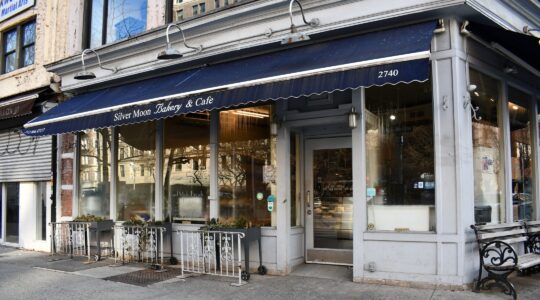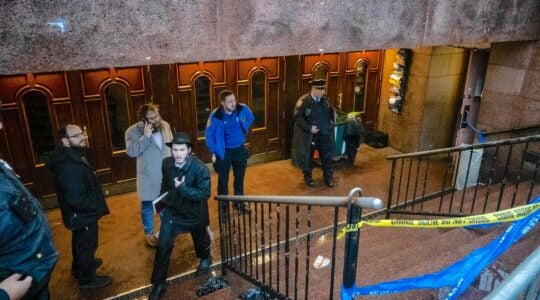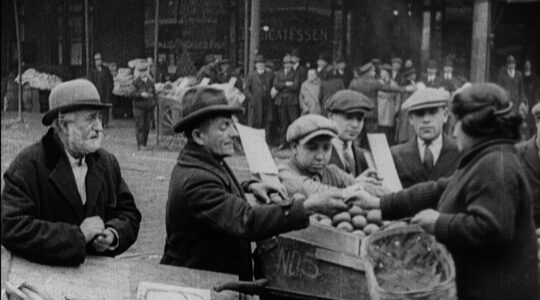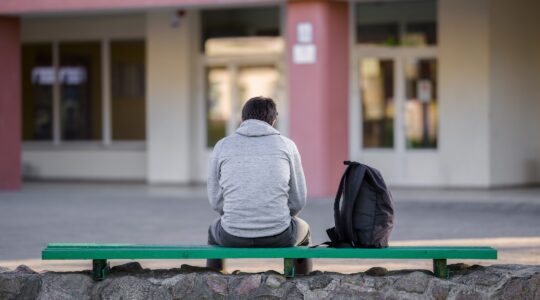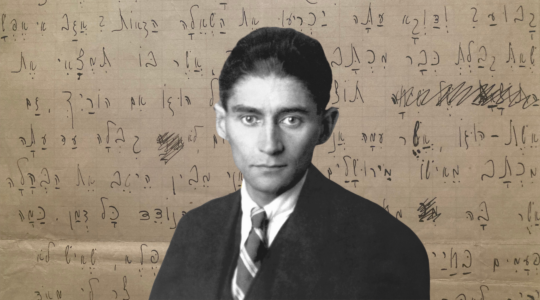While Israeli Jews are fearing the next suicide bomb, French Jews are suffering the old-fashioned way ó from fists, knives and fire.
In a lengthy and powerful piece, ìFranceís Scarlet Letter,î in Vanity Fair (June), writer Marie Brenner reports that France has seen more than 1,000 acts of violence against Jews since 2001. The pro-Palestinian French media has been maintaining ìa barriere du silence,î Brenner says, minimizing or obfuscating the daily thuggery: synagogues and kosher shops torched, men in Orthodox garb jumped and beaten, urine thrown on Jewish children, women being spit on, all to the persistent chants of ìKill the Jewsî and ìDirty Jews.î
The courts apparently are no solace. Brenner reports that police often refuse to enter the worst neighborhoods, liberal judges frequently dismiss anti-Semitic cases and 37 percent of sentences are not carried out. There are more than 6 million Muslims in France, nearly 10 percent of the population and a hefty voting bloc ó a far larger community than the 650,000 Jews.
The oppressed Jews, Brenner discovered, mostly are Sephardim living in the banlieues on the outskirts of Paris, diverse working-class neighborhoods that have the poorer Jews living cheek by jowl with a mushrooming Muslim population.
Brenner writes that beleaguered French Jews are pretty much on their own, as the more upper class, establishment Ashkenazim think the problem is happen.
Brenner found that the establishment Jews considered their Judaism secondary to their French identity and were contemptuous of the ìJudeocentric.î Their dominant position, expressed to Brenner, was to let things alone ó jeter de líhuile sur le feu, ìdonít throw oil on the fire.î The suffering Jews, though, are being assisted by the Simon Wiesenthal Center and the Anti-Defamation League.
The situation in France was reported on as well by Sebastian Rotella in a major article appearing in both The Los Angeles Times and the Boston Globe (May 18). The Jewish sense of siege, Rotella writes, is fueled by ìIslamic fundamentalism, immigration, and militant leftism.î
Thereís more than one way to beat up Jews. Newsweekís ìWeb exclusiveî (May 14) ran an item from John Edgar Wideman, identified as a black novelist and ìintellectual,î speaking of anti-French feeling in the U.S. He writes: ìIím appalled and shamed by the despicable tactic of vilifying a whole country, a whole people, to disqualify their point of view.î He then proceeds to wildly vilify the Jewish state and the Jewish people.
ìAnger at the French,î he says, ìsolidifies Americaís complicity with the most militant, ruthless, intransigent elements of Ariel Sharonís Israeli government.î Casting Jews as slave-trade racists, Wideman charges that the U.S. wants to turn the Middle East into a ìvast plantation,î with Israel as ìour untouchable proxy, the overseer guarding American interests.î
Of course, Wideman is an intellectual, but itís hard to imagine Newsweek publishing free-lance ìopinionî like that about any racial, sexual or ethnic group except the Jews. Itís open season.
Shifting Arab populations and their anti-Semitic repercussions can also be seen in Canada, where the Montreal Gazette (May 14) reports that there are now more Muslims (108,620) than Jews (89,915) in French Quebec.
Rabbi Avi Shafran, director of public affairs for Agudath Israel, sent in this clip from The New York Times in their April 10 look at the French situation. The Times reported on the ìheightened tensions between Muslims and Jews,î as if the window and the rock that hit it were equally at fault for the breakage.
Similarly, the Times last year referred to the Crown Heights riot as ìviolence between blacks and Orthodox Jews,î and a few weeks ago (April 26) referred to the Crown Heights riots as ìunrestî that left dead ìone black child and one Jewish manî ó as if the childís death was the result of the unrest and not a car accident.
The aftermath of that unrest, the civil rights conviction of Lemrick Nelson, lately has been getting more than its share of ink. Youíd think it was the most important, if not only, Jewish-related ìhateî crime trial going on in the city.
In fact, there was the recently concluded trial that led to the conviction of two Palestinians in the attempted firebombing of the Conservative Synagogue of Riverdale.
Is throwing a firebomb at a shul, even if the bomb didnít ignite, worth so much less media attention than stabbing of an individual Jew, even if that stabbing is not (at least according to the Nelson jury) the reason he died?
On Sunday, long after every other paper in the city, the Times finally reported on the sentencing in the synagogue case. Since first reporting on the bombing in October 2000, the Times did not mention the case again other than running one Associated Press report. The Times coverage (May 18) began with two questions: ìA bias-motivated attempt to firebomb a synagogue? Or a misguided message critical of Israeli policies against Palestinians?î
In fact, the answers came long ago. According to the convicted Palestinian himself, the firebombing was to send a political message. According to the judge and the jury, the way he sent that message constituted bias. Why the Times question marks?
The Times, with its huge staff, did not cover even one day of the firebombing case, but the little Riverdale Review, a free weekly paper with a circulation of 20,000, with a fluctuating staff of often less than five available writers, sent a young reporter, Candace Grove, to the courthouse for every single session of the three-month trial.
The Reviewís publisher and editor, Andrew Wolf, told The Jewish Week, ìPeople [in the neighborhood] are calling us heroes, but I didnít that there was any other way to cover the trial. Lemrick Nelson was an isolated incident. What happened in Riverdale is part of a larger picture,î the continuum between Middle East terrorism and this case in New York. As far as the Times is concerned this case didnít exist.î
When the first conviction came down, Wolf said, ìthe Times was the only daily paper in the city not to put in even the smallest item about it. The Post covered it, the Daily News, the Sun, the Journal-News in Westchester, but the Times ó nothing. Because we were lucky and the synagogue didnít burn is no reason to ignore it
The New York Jewish Week brings you the stories behind the headlines, keeping you connected to Jewish life in New York. Help sustain the reporting you trust by donating today.
